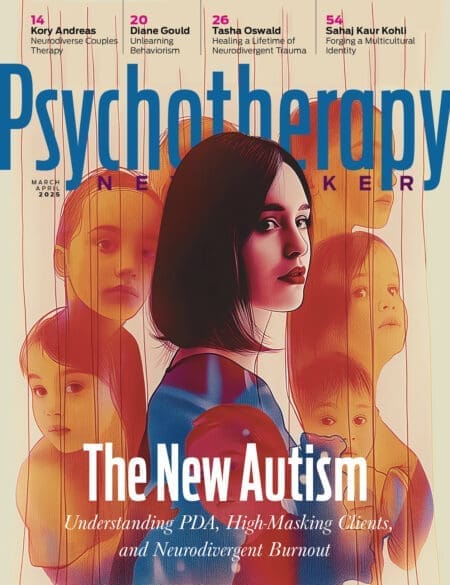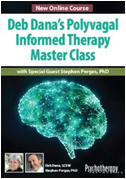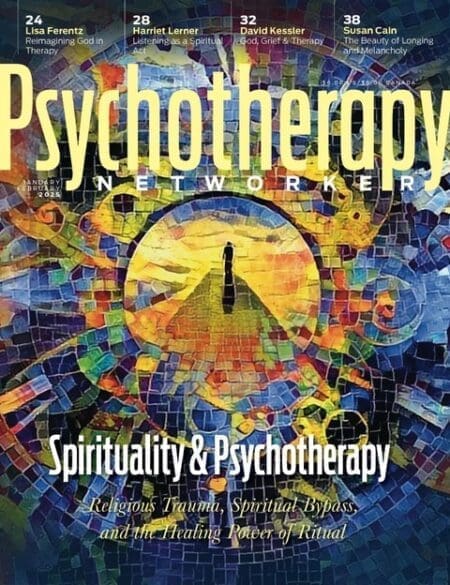Penny and Rick came into my office on a sunny Friday afternoon, chatting about the nice weather. But their smiles quickly dissolved into frowns after they sat down and started telling me about their issues. It was clear to me that they loved each other, but they bickered regularly and were struggling to connect. They were both unhappy with the state of their marriage.
According to Rick, Penny was a methodical neatnik. “Well, I do hate surprises,” she admitted. Rick, on the other hand, was fun and distractible. “She gets so upset about socks on the bedroom floor,” he said. “I don’t even notice them! I prefer to focus on interesting things.” From this brief exchange, I had an inkling about their Enneagram temperament styles.
“So, do you have conflicts about the socks?” I asked. Understanding what they fought about and how it related to the different ways they approached the world would help me get a sense of their Enneagram temperament differences.
“It’s kind of embarrassing, but yes, we fight about socks nearly every day,” Penny said. “I mean, we fight about other things, too. We have three kids between the ages of two and eight, and they leave toys all over the house. It drives me crazy. I can’t relax till they’re put away.”
Rick, who’s seated on the couch next to Penny, braces for what’s coming next.
“Yesterday, when I got home from work, Rick told me he had a big project and needed me to play with the kids so he could do it.”
“It didn’t seem like a lot to ask,” Rick muttered. “I’d been watching them all day.”
“I’m happy to play with the kids,” Penny interjected, “but then why can’t he pick up the toys and finish the dishes before I get home? If he’d just do that one simple thing, I’d be able to relax. I can’t relax if the house is a mess.”
“Why do toys and dishes affect her so much?” Rick asks. “Honestly, I don’t get it. Just take the kids outside and play in the yard if you have to!”
Rick and Penny, like many couples, find themselves in constant conflict, not because they’re not a good match, but because they have different sensitivities, priorities, and temperamental styles.
Opposites Do Attract
How is it that people who are so different fall in love and choose each other for a lifetime of frustration? This question has always intrigued me. In my 30 years of working with clients as a certified couples therapist, I’ve experimented with many different theories, frameworks, and perspectives in search of answers. What I’ve discovered is that very few partners have the same temperament. Instead, those who enter romantic relationships seem drawn to a person who exhibits the part of themselves that’s undeveloped or nonexistent. Partners feel more complete with someone who possesses their missing attributes, however alien they may be. The risk-taking entrepreneur finds a partner who grounds them. The over-the-top emotional type finds a quiet, serene partner. And likewise in reverse. Yet, having yearned for a mate who has ready access to emotions, and isn’t shy about expressing their feelings, the quiet, introverted person in a couple then shrinks away from their partner’s emotionality.
The Enneagram is a system of nine inborn temperaments set forth over 2,000 years ago. The Ancient Greeks wrote it down, and because “Ennea” is the Greek word for nine, they named it the Enneagram. Each style represents a gift, motivation or drive that can lead to a burden or challenge. For instance, the gift of the Enneagram One is to see all the details around them with the need to correct what they perceive as wrong. This causes tension with friends and family who don’t want to be corrected. Thinking about their relationship conflicts through an Enneagram lens can open a couple’s eyes to hard-wired differences by helping them explore their distinctive inborn temperaments. As they understand one another with less judgment, their motivation to collaborate grows.
Since 1995, I’ve been teaching the Enneagram system to my clients in semi-annual seminars with groups of 20-30 participants, sharing my view of the nine temperaments as a system that encompasses behavioral, emotional, and cognitive styles common to humans. In my work, I’ve found the Enneagram offers a simple and practical way of making sense of our tendency to partner with people who possess seemingly opposite traits. This doesn’t mean we all fit easily into the nine categories, or that these styles don’t express themselves in a wide variety of ways. Our nature and the expression of pre-born traits are shaped by early experiences. We process trauma differently depending on our temperamental style. This adds to the Enneagram’s usefulness in psychotherapy since we can anticipate the kind of developmental trauma each Enneagram style likely encountered in childhood. The Kind-Hearted Two in a dysfunctional family, for example, often experienced some degree of parentification. It’s not unusual for Kind-Hearted Twos who’ve been parentified to marry grandiose or narcissistic partners. Each temperament has a strength that can be distorted or nourished, depending on childhood experiences and the Enneagram style’s downside.
After sharing with Rick and Penny how I draw on the Enneagram in my work and how it might be helpful to them, I handed them a copy of a small booklet I created several years ago for couples like them that summarizes the nine styles.
“Take a minute to read through this,” I suggested. “Let me know if you resonate with any of the types.”
Although I tend to have a sense of couples’ temperament styles early on, I believe it’s important to allow partners to resonate with the adjectives and descriptors without feeling swayed or pressured. Based on conversations I’ve had for three decades with several thousand clients, I’ve come to believe that the online tests are only around 50% accurate. For this reason, I don’t believe taking the tests online is worth the time or money. Looking at gifts and burdens in the different Enneagram styles is usually enough to jumpstart my clients on their journey of self-reflection regarding their temperamental differences.
Nine Temperaments
Each temperament outlined in the Enneagram comes with a particular ability, which can be thought of as wired into the brain. That ability, when overused, leads to challenges. After reading through the Enneagram booklet, Rick identified with the Enneagram Nine. As a Nine, the thing that frustrated Penny most about Rick is also one of his gifts. He has an easy-going temperament, and he rarely notices details. As a result, tensions can arise with Penny, who identified with the Enneagram One, the characteristic style of those who care a great deal about details.
Here are the nine temperament styles with their abilities and challenges.
One. The Detail Oriented has the gift of noticing the details in life and the burden of needing to correct what seems wrong. Ones say, “I love making every detail perfect.”
Two. The Kind-Hearted are gifted with tuning into others’ emotions, interpreting their needs with a desire to help them. The burden of the Two is not to be aware of their own needs. Twos say, “I am more comfortable giving than receiving.”
Three. The Goal-Oriented are gifted with focus, which they use to achieve, and problem solve. The burden of the Three is fearing failure and missing relational cues. Threes say, “I am what I do. Don’t just stand there, do something.”
Four. The Individualist has the gift of deep emotions, creativity, and a sense of the extraordinary. The Four has the burden of wanting to belong and individuate. Fours say, “Sometimes I feel isolated, even with my friends.”
Five. The Observer is gifted with perception and objectivity. Their burden is their detachment and need to withdraw. Fives say, “Having my private space is very important. I dislike large groups of strangers.”
Six. The Guardian/Doubter is gifted with a keen sense of what can go wrong. They’re always on alert for security and safety and burdened by worry. Sixes say, “When I feel threatened, I’ll either withdraw or put on a tough act.”
Seven. The Joyful is gifted with adventurousness and enthusiasm. Their burden is avoidance of pain, theirs or others. Sevens say, “I let go of grievances much faster than others.”
Eight. The Take-Charge has the gift of leadership, management skills, and a big picture view. Their burden is insensitivity to those who follow, and an aversion to vulnerability. Eights say, “Some take offense at my bluntness.”
Nine. The Easy-Going has the gift of being a peacemaker, patient, and good-natured. Their burden is being distractible, stubborn, and preferring procrastination to action. Nines say, “I often feel connected to people and nature. When people try to control me, I dig in my heels.”
Gifts and Burdens
Penny’s gift of noticing details and homing in on what’s right and wrong makes her uncomfortable with anything that’s out of place. She’s driven internally to correct what’s incorrect, and to be helpful. One downside of this gift is that she’s often perceived as critical.
Rick’s gift as an Easy-going Nine is to be fun-loving, calm in a crisis, and good at sidestepping conflicts. He doesn’t notice the odd sock on the floor or where he left his keys. The burden of the Enneagram Nine is that—as Rick himself admits—he often forgets things, doesn’t like planning, and digs in his heels when he’s challenged. Recently, Rick had been diagnosed with ADHD. Nines tend to have many interests and be distractible. They have difficulties with focus and organization. Nines are the opposite of Ones who easily plan and see every detail.
Shortly after Rick married Penny, he was dismayed to discover that she was different than he’d thought. Penny was also dismayed when Rick exhibited traits she hadn’t noticed. Many couples interpret these apparent changes in their partner as “they don’t love me enough.” Penny’s perennial complaint about Rick was, “If he loved me, he’d pick up the toys at the end of the day and follow my directions, so he doesn’t lose his keys, again.” Rick’s complaint about Penny was, “If she loved me, she wouldn’t dismantle the Lego creation I built with the kids because she’d recognize that having fun is more important than a neat house.” My goal was to help them join forces and recognize that each of them carried strengths and gifts the other lacked.
The work of couples therapy is often to help partners accept differences and experience them as assets rather than as problems to fix. Clients can grow within their relationships by accepting and understanding the gifts and burdens that come with their own and their partner’s particular temperamental style. By becoming more self-aware, and accepting the reality of their temperamental tendencies, they can grow to appreciate each other more.
Temperament and Refrigerators
For both Rick and Penny, their childhood histories revealed attachment and alienation issues affecting and affected by their Enneagram temperament styles. Penny’s detail-oriented One temperament had helped her through an unhappy childhood. She’d grown up with a raging father for whom nothing was good enough. Eventually, she’d left her hometown and gone to college to get away from him. Rick’s easy-going Nine neglect of details and penchant for quick solutions to immediate problems helped him feel confident and self-sufficient in a home environment where his parents were often distracted by Rick’s brother, their acting-out son. The downside was, Rick had always fended for himself with his Nine distractibility and unrecognized, untreated ADHD.
Penny’s history of being raised by a critical father dovetailed with her detail-oriented One style, amplifying her fault-finding tendencies with Rick. Though he’d learned to defend himself against his acting out brother, it stung to defend himself against Penny over things he viewed as insignificant. He felt he could never get things right with Penny. Most of their conflicts were over who was right and who was wrong. Penny thought it was right to put the toys away before she got home. Rick thought it was right to leave them out overnight so the children could continue their games the following day. The power struggles that emerged from their opposing perspectives left each of them feeling defeated and alone.
At the beginning of therapy, Rick and Penny had told me that making decisions together had always led to battles that remained unresolved. For example, when choosing a refrigerator, Rick wanted to explore every option, while Penny cared mostly about being practical. She measured the space in their kitchen for the refrigerator. “Why would you even look at a refrigerator that won’t fit in our kitchen?” she’d said. Rick had said, “I don’t care about the measurements at this stage, I just want to see all my options.” This had led to a stalemate. Rick had refused to pay the slightest attention to Penny’s measurements, and Penny had refused to look at refrigerators without taking measurements into account. But through our work, Rick and Penny began to see good intentions in each other. Slowly, they implemented behavioral changes. A few months into couples therapy, they reported having finally chosen a refrigerator.
“Rick had the opportunity to look at all the options,” Penny said.
“Then she came in with her measurements and we narrowed them down,” Rick said. “She asked the salesperson about the icemaker, the lighting panel, and other details.”
Thanks to the work we’d done on understanding their distinctive temperaments, Penny said she’d been less worried about having to look for the refrigerator the “right way.” As a result, she was able to trust that they’d be joining forces in their final decision on which refrigerator to buy. Rick also recalled aspects of our work that related to Penny’s Enneagram type. He reminded himself that it was okay if Penny followed up with questions after he expressed his preferences, and if his favorite refrigerator was too big, or lacked some necessary feature, it didn’t make his choice wrong. Together, they’d narrowed down their choices to several refrigerators that fit both of their requirements.
Power struggles over the right and wrong way to do things are just one part of the complex dynamic contributing to conflicts in relationships. By making sense of one another’s temperamental styles through an Enneagram lens, therapists can help partners understand key differences in a new way. Sometimes, the way we do things and see the world isn’t personal. It’s a longstanding part of who we are that can enhance how we interact as a couple, if we’re willing to work as a team.
Lynn Turner
Lynn Turner, PhD, LCSW, has used the Enneagram in her practice since 1995 with clients of all ages. She teaches Enneagram seminars locally and nationally and is writing an Enneagram book for psychotherapists. Website: www.lynnsenneagram.com.













